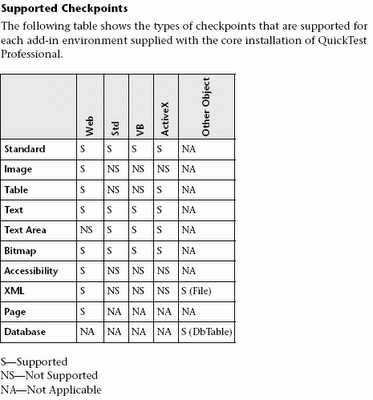QTP Question 20: What is the Diff between Image check-point and Bit map Check point?
Image checkpoints enable you to check the properties of a Web image. You can check an area of a Web page or application as a bitmap. While creating a test or component, you specify the area you want to check by selecting an object. You can check an entire object or any area within an object. QuickTest captures the specified object as a bitmap, and inserts a checkpoint in the test or component. You can also choose to save only the selected area of the object with your test or component in order to save disk Space For example, suppose you have a Web site that can display a map of a city the user specifies. The map has control keys for zooming. You can record the new map that is displayed after one click on the control key that zooms in the map. Using the bitmap checkpoint, you can check that the map zooms in correctly.
You can create bitmap checkpoints for all supported testing environments (as long as the appropriate add-ins are loaded).
Note: The results of bitmap checkpoints may be affected by factors such as operating system, screen resolution, and color settings.

